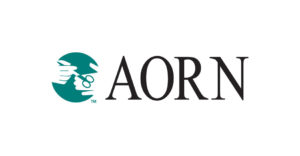 DENVER – Sept. 18, 2019 — New AORN guidelines released this summer call for all surgical patients to receive some form of hypothermia prevention, with the OR team making the selection on a case-by-case basis.
DENVER – Sept. 18, 2019 — New AORN guidelines released this summer call for all surgical patients to receive some form of hypothermia prevention, with the OR team making the selection on a case-by-case basis.
AORN is the Association for periOperative Registered Nurses. Based in Denver, the association has more than 40,000 members.
“We see facilities that use a single method of warming, one which may not be the best in every patient care situation,” Byron Burlingame, MS, BSN, RN, CNOR, and AORN senior perioperative practice specialist and author of the guideline, told Share Moving Media in an email.
Too many patients experience some form of unplanned perioperative hypothermia, in which their core body temperature drops below 96.8° F during surgery, according to the association. A drop in core body temperature can lead to adverse patient outcomes, such as myocardial events, infections, poor incision healing, postoperative pain, and increased blood loss.
The updated guideline puts more detailed focus on preoperative selection of patient warming methods based on patient factors, procedure, operative position, location of IV access and warming device constraints. Identifying the patient’s specific needs is also discussed in the update in order to maintain a safe core body temperature prior to anesthesia induction.
“The most important factors [in the selection process] are those that are procedure-related,” says Burlingame. “For example, this may be an underbody system if the patient is having a procedure that requires a large amount of the body to be exposed, or it may be a full body blanket if the patient is having a procedure on an extremity.”
Hypothermia prevention devices are referred to either as “passive” or “active.” Passive devices include cotton blankets, surgical drapes, or so-called space blankets. Active devices include circulating-water mattresses or garments, forced-air-warming devices, and heaters.
It’s true that cost may be an issue to some health systems as they implement the new guidelines, says Burlingame. “And yes, staff time is another challenge, as there can be inconsistencies about where to apply the active warming device … in the preop area.”
But the payoff for the patient and the provider is huge, particularly in the prevention of complications associated with hypothermia, he says.
Those complications include myocardial events, wound infections, poor wound healing, postoperative pain, increased blood loss and need for blood transfusion, reversible coagulopathy (i.e., platelet dysfunction), impaired renal function, decreased drug metabolism, increased peripheral vascular resistance, postoperative protein catabolism, altered mental status, pressure ulcers, increased postanesthesia care unit (PACU) length of stay, prolonged hospitalization, and death.
What’s more, patient satisfaction improves when hypothermia is prevented, Burlingame adds. “This increase in satisfaction is supported in the literature.”
A subscription is necessary to view the updated hypothermia guidelines, at https://aornguidelines.org/guidelines/content?sectionid=173731777&view=book
